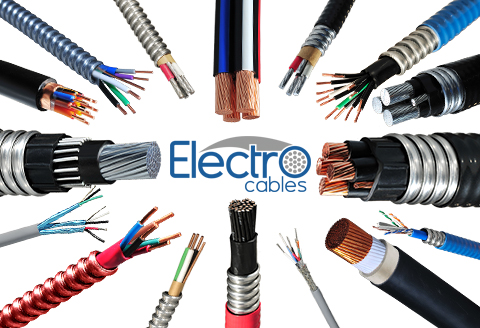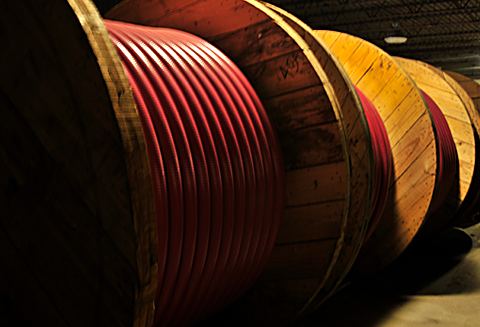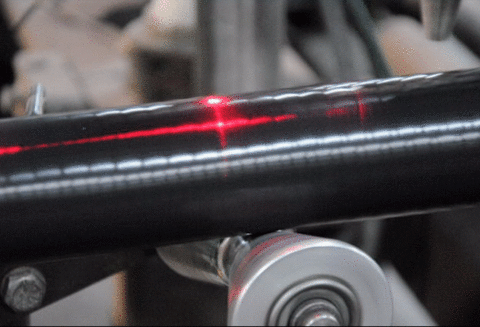A partner you can trust
5 Essential Tips for Choosing the Right Metal Clad Cable for Your Project
In the rapidly evolving electrical infrastructure landscape, selecting the appropriate metal clad cable for your project is a crucial decision that can significantly influence both safety and efficiency. According to a report by the National Electrical Manufacturers Association (NEMA), the demand for metal clad cables is projected to grow by over 5% annually through 2025, driven by the increasing need for durable and reliable wiring solutions in commercial and industrial settings. Metal clad cable not only offers enhanced protection against physical damage and environmental factors but also ensures compliance with stringent safety standards. Therefore, understanding the essential factors to consider when choosing metal clad cable is paramount for engineers and contractors alike, ensuring optimal performance and longevity in their electrical installations. This blog will provide you with five essential tips to make an informed decision that aligns with your project requirements.

Understanding the Different Types of Metal Clad Cable and Their Applications
When considering the right metal clad cable for your project, it's crucial to understand the various types and their specific applications. Metal clad (MC) cables are designed to provide excellent protection in harsh environments. The two most common types are aluminum-clad and steel-clad cables. Aluminum-clad cables are lightweight, making them ideal for residential and light commercial applications, while steel-clad cables offer superior durability and are often used in industrial settings where extreme conditions prevail.
Tip: Always evaluate the environment where the cable will be installed. For example, if you’re working in an area with chemically aggressive substances, selecting a steel-clad cable might be the safer choice to prevent corrosion and damage over time.
Another important consideration is the cable’s conductor material. Copper conductors are best known for their excellent conductivity and flexibility, making them suitable for applications requiring reliable power delivery. In contrast, aluminum conductors can be a cost-effective alternative while still meeting electrical needs in many scenarios.
Tip: Review detailed product specifications and compliance standards, such as NEC and UL ratings. These documents provide insights into the cable’s performance under different conditions, ensuring you choose a product that aligns with your project requirements.

Evaluating Voltage Ratings: Ensuring Cable Selection Meets Project Requirements
When selecting metal clad cable for your project, evaluating voltage ratings is crucial to ensure safety and efficiency. Voltage ratings indicate the maximum voltage a cable can handle safely, which is essential in preventing electrical failures or hazards. According to the National Electrical Manufacturers Association (NEMA), cables must be rated for the specific application environment; for instance, standard voltage ratings for metal clad cables typically range from 600V to 5000V, depending on the insulation and construction compliance with industry standards.
Furthermore, factors such as ambient temperature and environmental conditions play a significant role in cable performance. A report from the IEEE reveals that temperature variations can affect the insulation properties of cables, potentially leading to premature failure if the voltage rating is not appropriately matched to the installation conditions. For example, in environments where temperatures exceed 60°C, it is critical to select a cable with a higher voltage rating to mitigate the risks of overheating and electrical shorts. Therefore, understanding the interplay between voltage ratings and the project’s specific requirements helps in choosing the right metal clad cable that ensures both reliability and compliance with safety regulations.
Assessing Environmental Factors: How Temperature and Moisture Influence Cable Choice
When selecting metal clad cables for your project, it's crucial to consider environmental factors such as temperature and moisture. Extreme temperatures can affect the insulation and overall performance of the cables. If your project is in an area with high heat, choose cables with heat-resistant insulation. Conversely, in colder climates, ensure the cable can withstand low temperatures without becoming brittle.
Moisture is another critical aspect to evaluate. If your project is located in a humid area or involves exposure to water, opt for cables that have moisture-resistant features. This will prevent corrosion and ensure longevity. Additionally, consider using proper sealing techniques to protect the cable terminations from moisture ingress.
Always remember to assess the specific needs of your project. For example, choosing cables with excellent flexibility can help in installations where bending and movement are necessary. Another tip is to consult with manufacturers for recommendations tailored to your climate, as they often have valuable insights and product options that can enhance your project's success.

Reviewing NEC and Local Code Compliance for Metal Clad Cable Installation
When selecting metal clad cables for your project, adhering to the National Electrical Code (NEC) and local code compliance is crucial. According to a report by the National Fire Protection Association (NFPA), over 60% of electrical fires occur due to improper wiring installations. Ensuring that your metal clad cables meet these regulations is essential not only for safety but also for project longevity. Familiarizing yourself with the NEC guidelines can help mitigate risks associated with fire hazards and electrical failures.
Integrating these tips with an understanding of NEC compliance will not only streamline your project but also enhance its safety and efficiency. Staying informed about the latest codes can have lasting benefits, as demonstrated by industry research indicating that adherence to code significantly reduces liabilities associated with electrical installations.
Analyzing Cost-Effectiveness: Balancing Quality and Budget When Choosing Cables
When selecting metal clad cables for a project, balancing cost-effectiveness, quality, and budget is crucial. Quality doesn't mean exorbitant prices; rather, it’s about finding the right performance characteristics that ensure reliability without unnecessary expenditure. By analyzing the specific needs of your project—such as environmental factors, electrical load requirements, and installation conditions—you can better determine which type of metal clad cable optimizes quality while staying within budget.
Cost is often a significant factor, but it's vital to look beyond the initial purchase price. Consider the long-term savings that higher quality cables might offer, such as reduced maintenance and replacement costs. Investing in premium materials can lead to fewer failures and longer lifespans, ultimately providing better value. Comparing different brands and understanding the warranties and support they offer can also influence the overall cost-effectiveness of your choice. By carefully weighing these factors, you can achieve a balance that meets both your performance needs and financial constraints.
Related Posts
-

Top Strategies for Sourcing Shielded Power Cable in Global Markets
-

Essential Guide to Understanding Twin and Earth Cable Specifications and Applications
-

Advantages of Choosing High Quality Electric Cable for Your Projects
-

7 Reasons Why Shielded Power Cables Enhance Electrical Safety and Efficiency
-

Ultimate Guide to Choosing the Right Power Extension Cable for Your Needs
-

The Ultimate Guide to Sourcing the Best Wire and Cable Products for Your Business

Products
Products
LEARN MORE
Current Inventory
Current Inventory
LEARN MORE
Custom Solutions
Custom Solutions
WE CAN HELPLighting Power & Control-Signal Cable
This content is restricted to site members. If you are an existing user, please log in. New users may register … LEARN MORE “Lighting Power & Control-Signal Cable”
LOOKING
FOR HELP?
We are here to help. You can contact us or create an account online to have access to special products, technical specifications and our new online quote tool.
ELECTRO CABLES
9 Riverside Drive
P.O. Box 276
Trenton, Ontario
CANADA K8V 5R5
N.A. Toll Free: 888-ELECTRO
(1-888-353-2876)
World: 613-394-4896
Fax: 613-394-4101
Email: sale@machinecables.com
We manufacture cables that are certified by the Canadian Standards Association (CSA), listed by Underwriters Laboratories and/or listed by Intertek (ETL).
Our quality management system is registered to ISO 9001: 2015. Our team is dedicated to consistently providing quality service and products to our customers.

© 2025 ELECTRO CABLES • SITE BY SNAP 360•
